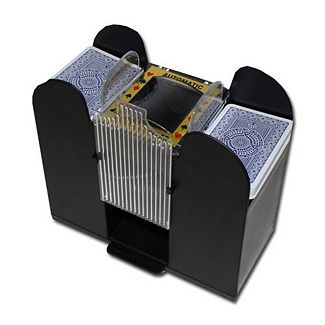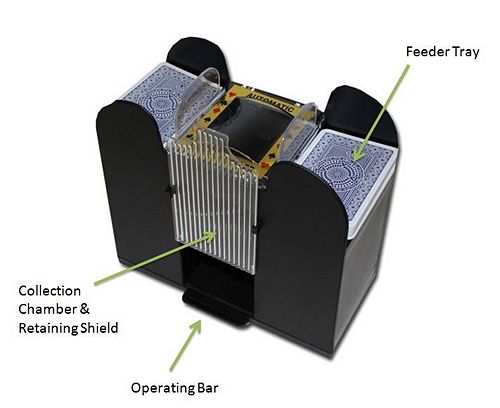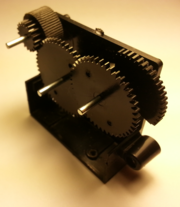Card shuffler 3
From DDL Wiki
(→Product Function and Evaluation) |
(→Team Members [TM]) |
||
| Line 81: | Line 81: | ||
=Team Members [TM]= | =Team Members [TM]= | ||
| + | Role:Rodrigo Bergamasco | ||
| + | Role:Allen Kim | ||
| + | Role:Alexander Kozhemiakov | ||
| + | Role:Angela Nawrocki | ||
| + | Role:Pranay Sharm | ||
=References [REF]= | =References [REF]= | ||
Revision as of 21:21, 29 January 2014
Contents |
Executive Summary
Primary Stakeholders and Product Needs
Distributor Needs
Distributor needs are concerned with the ease and safety of transport.
- Packed with smallest possible box to save space
- Packed with rectangular box to stack efficiently
- Packed robustly enough to withstand bumps and slight drops
- Batteries either not included or shipped according to U.S. Department of Transportation
Retailer
Retailers have the same needs as distributors for stocking purposes, plus some needs unique to the seller of the product.
- Packaging is colorful and intriguing to costumers
Consumer
Consumer needs are mainly related to portability, performance, maintenance and safety.
- Small
- Light
- Small table footprint
- Battery powered
- Shuffle quickly and thoroughly
- Minimal jamming
- Quiet
- Easy to load/unload
- Shuffle anywhere from 1 to 6 decks
- Work with brand new and used cards
- Long batter life
- Easily replaced batteries
- Easily fixed jams
- Robust
- Minimal Assembly
- Affordable
- Aesthetic product
- Safe to use and store
Product Function and Evaluation
Mechanical Function
Both sides of the card shuffler are mirrored and work independently. Their only connection is through the electrical circuit which closes once the bar is depressed. The following is a description of one independent side of the card shuffler.
The main mechanical function of the card shuffler comes from the motor/gearbox components. When the circuit is completed, the motor pinion turns the gearing system shown in figure 1. The pinion gear turns the first gear on the far right. This gear then translates its motion in two ways: 1) It directly rotates the agitator gear attached behind it on the same shaft 2) It translates its motion through the second gear to turn the third gear. The third gear is attached to a rubber wheel that grips a card from the feeder tray and slides it into the collection chamber. The agitation gear is a quarter gear that slightly protrudes above the feeder tray. This facilitates a steady flow of individual cards by vibrating the stack so that no cards stick together.
Upon entering the collection chamber, the cards encounter a routing surface (Part #adsf in Figure #adfasdf) which angles the cards downwards towards the base of the collection chamber. The base of the collection chamber sits on springs which compress as more cards are shuffled. This prevents the cards from flipping over on their way down the collection chamber by keeping the top of the stack close to the entrance of the chamber. Figure #adfs shows the platform of the collection chamber in its fully extended position; as cards stack in the collection chamber, the springs compress and the platform lowers.
Preliminary User Study
List of Parts
Design For Manufacturing and Assembly [DFMA]
Design For Manufacturing [DFM]
DFM Summary
Design for Assembly [DFA]
DFA Summary
Failure Mode and Effect Analysis [FMEA]
Design for Environment [DFE]
Team Members [TM]
Role:Rodrigo Bergamasco Role:Allen Kim Role:Alexander Kozhemiakov Role:Angela Nawrocki Role:Pranay Sharm



